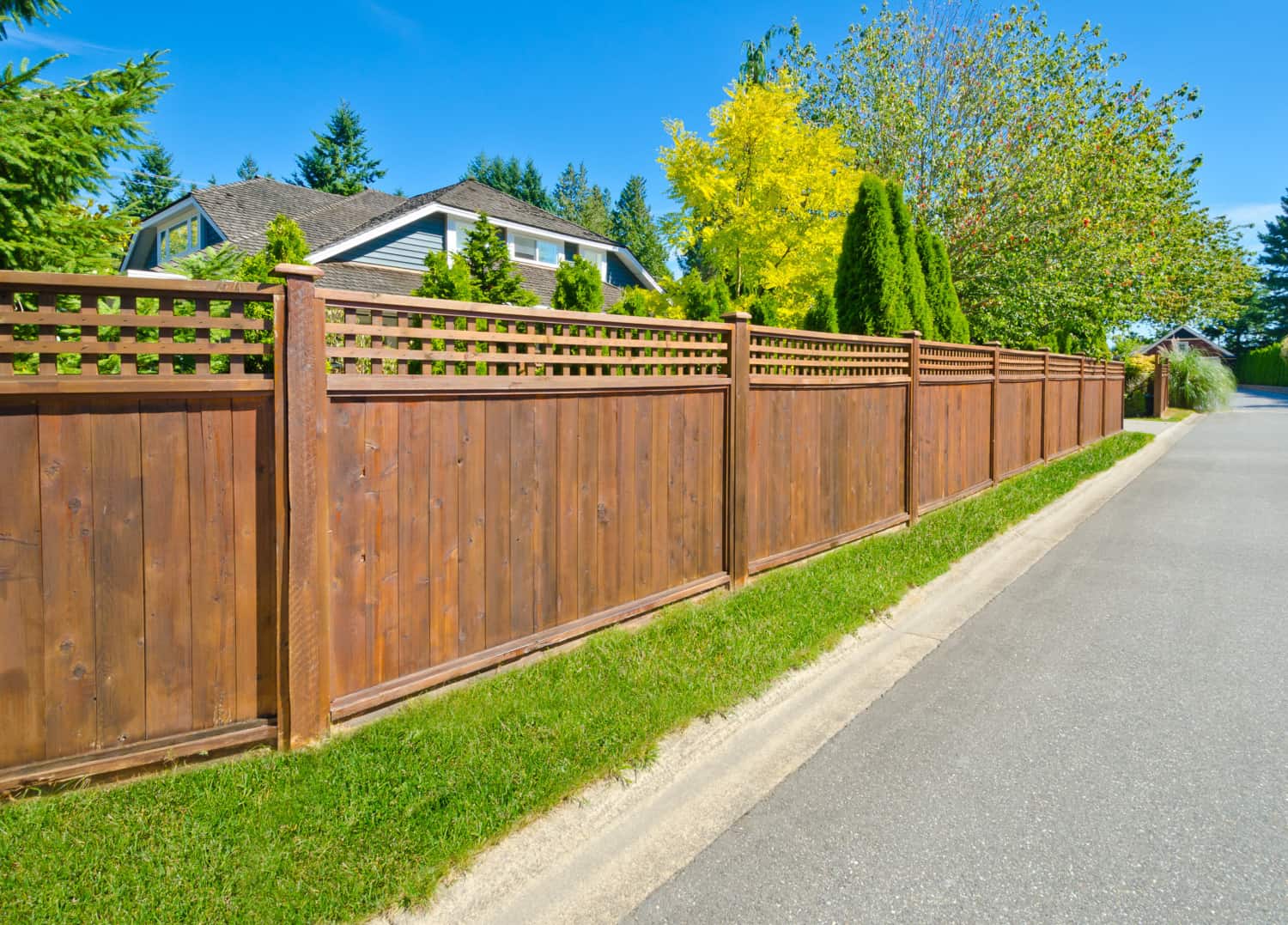All Categories
Featured

Amongst the most preferred alternatives, wood, vinyl, and light weight aluminum each deal special advantages and disadvantages. Below's a failure of the pros and disadvantages of these 3 common fencing products.
Timber Secure Fencing. Timber fence has been a timeless selection for homeowners as a result of its natural elegance and adaptability.
Pros:. Aesthetic Allure: Timber offers a classic and warm appearance that enhances a variety of architectural designs. Personalized: It can be painted, stained, or cut right into distinct designs to suit personal choices. Economical: Originally, timber fencing can be an affordable option contrasted to other materials. Eco-Friendly: Wood is a renewable energy and can be sustainably sourced. Cons:. High Maintenance: Timber calls for routine securing, discoloration, or paint to avoid rot, insect damage, and weathering. Durability Issues: Without appropriate treatment, wood can warp, crack, or degeneration with time, specifically in locations with high moisture. Shorter Lifespan: A wood fence usually lasts 10-20 years, relying on the kind of wood and level of maintenance. Timber is suitable for those who value a typical appearance and are prepared to devote to its upkeep.
Plastic Fencing. Vinyl is a modern-day, low-maintenance fence option that has actually grown in appeal in the last few years.

Pros:. Low Maintenance: Vinyl does not need painting, staining, or securing and can be quickly cleansed with soap and water. Weather Resistant: It stands up to rough climate condition without deteriorating, rusting, or bending. Durable: Plastic fences can last 20-30 years with marginal upkeep. Range of Styles: Readily available in numerous colors, layouts, and structures, some vinyl choices resemble the look of timber. Cons:. Higher Upfront Cost: Plastic fence can be extra costly initially compared to timber. Brittleness in Cold Climate: In severe cool, vinyl may crack or end up being breakable. Minimal Repair works: Private panels can be tough to change, requiring cautious matching to the existing fencing. Vinyl is best matched for homeowners seeking a sturdy, low-maintenance remedy with contemporary appearances.
Light Weight Aluminum Secure Fencing. Light weight aluminum fence is a lightweight and long lasting option, often chosen for its modern-day look and convenience.
Pros:. Rust-Resistant: Aluminum doesn't corrosion, making it an excellent choice for moist or wet climates. Reduced Maintenance: Requires very little maintenance and is easy to clean. Resilient: While light-weight, aluminum is strong sufficient to withstand many ecological problems. Lengthy Lifespan: Can last several decades without considerable wear or damage. Range of Styles: Offers a classy and smooth appearance, frequently utilized for ornamental or decorative functions. Cons:. Higher Expense: The initial investment for aluminum fencing is more than wood or plastic. Much Less Privacy: Light weight aluminum fences are typically designed with open pickets, making them less efficient for personal privacy. Susceptible to Damages: Although resilient, light weight aluminum can be nicked by solid influences. Light weight aluminum is suitable for those looking for a fashionable, lasting option that calls for minimal treatment.
Making the Right Selection. Each fence product-- wood, vinyl, and aluminum-- offers unique benefits and disadvantages. Your choice must rely on your specific priorities, such as budget, upkeep choices, environment, and aesthetic goals:
If you enjoy a standard appearance and don't mind routine upkeep,Pick timber. Go with plastic if you want a low-maintenance, weather-resistant fencing with modern-day allure. Choose aluminum if you focus on sturdiness, corrosion resistance, and a smooth design. By evaluating these advantages and disadvantages, you can select a fence product that boosts your building while satisfying your functional requirements.
Latest Posts
Customized Wealth Administration with WyHy Federal Credit Rating Union
Published Apr 21, 25
1 min read
Individualized Wealth Administration with WyHy Federal Cooperative Credit Union
Published Apr 21, 25
1 min read
Montclare Auto Repair: A Reliable Auto Service Provider in Montclare
Published Apr 21, 25
2 min read
More
Latest Posts
Customized Wealth Administration with WyHy Federal Credit Rating Union
Published Apr 21, 25
1 min read
Individualized Wealth Administration with WyHy Federal Cooperative Credit Union
Published Apr 21, 25
1 min read
Montclare Auto Repair: A Reliable Auto Service Provider in Montclare
Published Apr 21, 25
2 min read